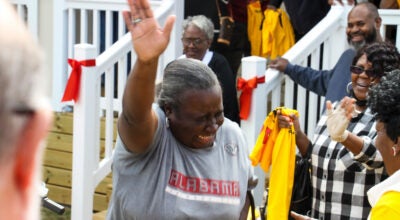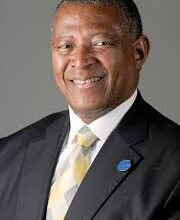Jewish families use Passover Seder to honor Exodous
Published 11:14 pm Saturday, March 27, 2010
Not all Jewish holidays relate to events at the temple. Sometimes, holidays such as Passover, or Pesach is Hebrew, stem from the home.
“I believe that more Jews in this country celebrate Passover and have a Passover Seder than even celebrate the high holy days of Rosh Hashanah and Yom Kippur,” said Steve Grossman, the lay leader of Selma’s Jewish congregation. “But even non-observant Jews very often have, or go to, a Passover Seder.”
The Seder, meaning order, is a ceremonial meal conducted from a Haggadah, the book containing the service and readings for the meal.
Passover, which begins Monday at sundown, occurs every year on the lunar Jewish calendar on the 14th of the month of Nissan, which occurs in March or April. Seders are held on the first and second night of the eight-day celebration.
This year, the Seder is on Monday and Tuesday.
The time of year coincides with spring and also the Christian observance of Easter. It is believed that the Last Supper was in fact a Passover Seder.
“It is about the redemption of the Israelites from slavery in Egypt, but it’s not to dwell on that particular event,” Grossman said. “It’s to deal with all times in our history when God has saved or protected the Jewish people.”
Passover is based from the story of Moses leading the Jews out of Egypt, a passage in Exodus, the second of five books of the Torah, the first five books of the Bible.
“The basics of Passover is that when Pharaoh was finally induced by the 10 plagues to allow the Israelites to leave, the decision was made to leave immediately and not hang around,” Grossman said. “In which case the dough did not have a chance to rise, which is why the bread made from the dough is unleavened. The main characteristic of Passover ever since has been that during that period you only eat unleavened bread or any other products that do not have leavening in them.”
Traditional unleavened bread, known as matzo, is round and is more of a thin pita texture. Modernized matzo is in a square cracker form. From the pieces of matzo, the middle piece is broken in half is called the Afikomen, meaning dessert in Aramaic. It is hidden and the children of the Seder find the matzo, which is eaten as dessert. The Seder cannot end until the Afikomen is eaten.
At the center of the table is the Seder plate, complete with karpas, maror, z’roa, charoset and beitzah. Each item offers different symbolism.
Karpas is a green vegetable, usually parsley, representing spring and the growth of the Jews in Egypt. But, even with the life and continuing of generations, they lived in slavery under Pharaoh and the Egyptians. For this reason, the karpas is dipped in saltwater to remember the sweat and tears shed by the Israelites.
Maror, usually horseradish, is the bitter herb that symbolizes the bitterness of slavery. This is eaten on a small piece of matzo.
Z’roa is a roasted lamb shank bone, a Paschal or Passover sacrifice, the sacrifice the Israelites gave to God the night before Pharaoh freed the slaves. The Jews were instructed to mark their front doors with the blood of the lamb so that the angel of death would pass over the house during the 10th plague of the killing of the first-born child.
Charoset is a mixture of apples, nuts, honey and wine to symbolize the mortar used to build bricks for Pharaoh. This is also eaten on a small piece of matzo.
Beitzah, the roasted egg, symbolizes the remembrance of the suffering of the Jewish people through the ages, as well as the life cycle and a hope for new beginnings.
A favorite Passover dish is matzo ball soup. Crushed up matzo is made into matzo meal, used like flour, with eggs and salt to form fluffy balls served in a bowl of chicken broth.
Because the holiday is celebrated in the home, many families have varying traditions.
“Our family always does our own thing,” said Ronald Leet. “Everything is done the same every year. To us, it’s traditional.”
Leet has also conducted two Seders for the members of St. Paul’s Episcopal Church during the past six years.
“They like to participate and learn about our religion,” Leet said. “It helps them to understand our religion.”
No community Seders will be held this year.





